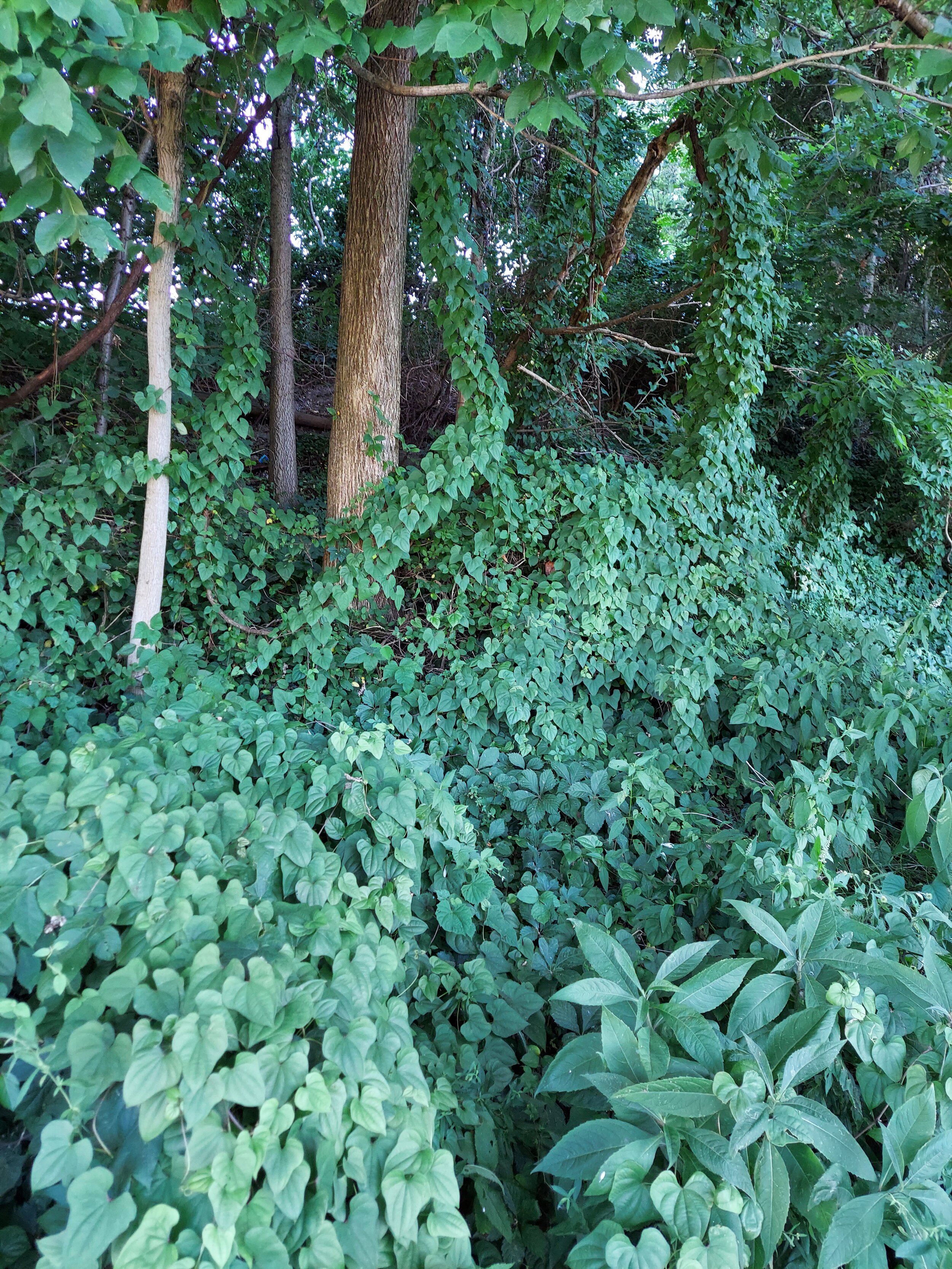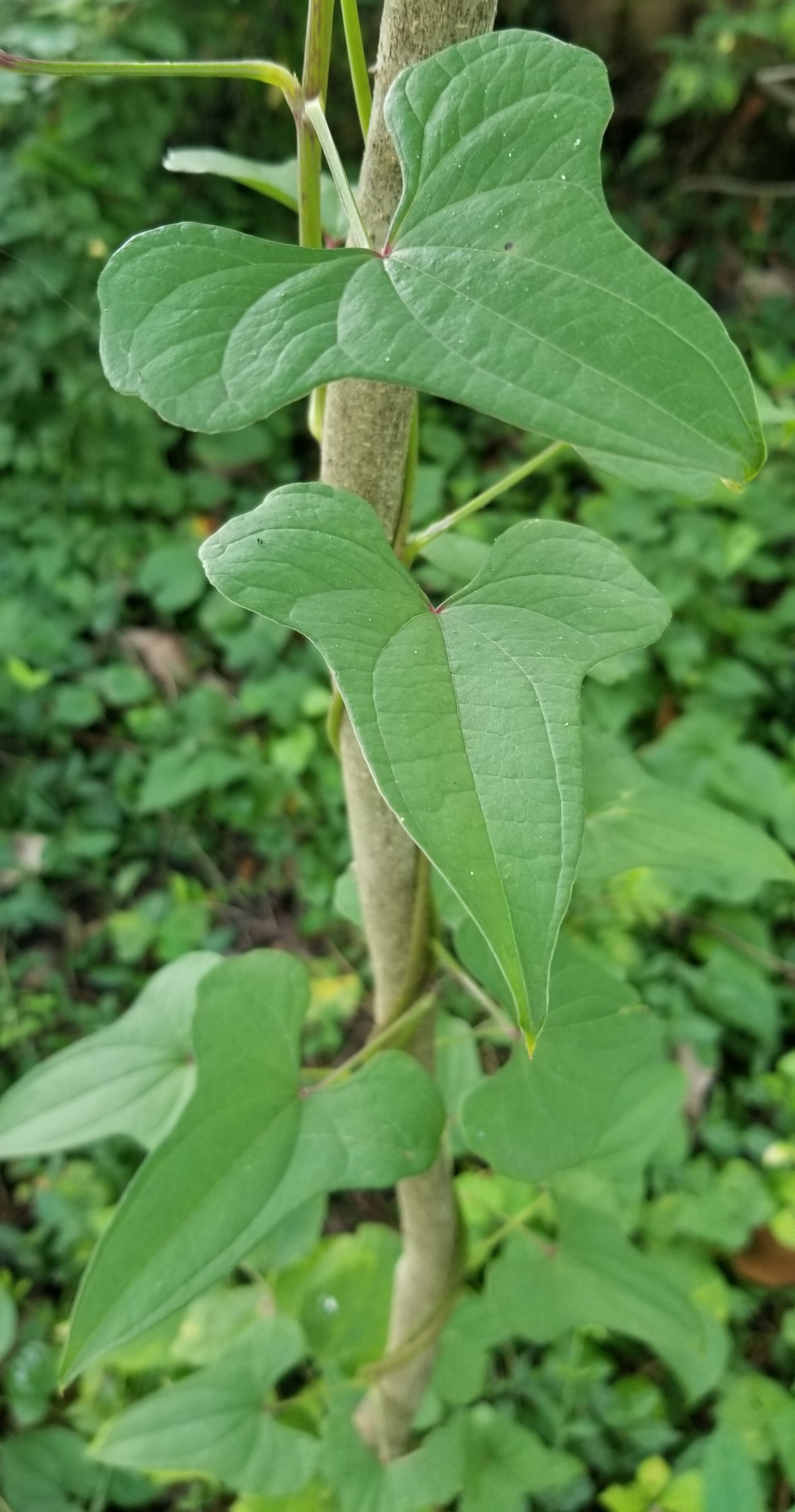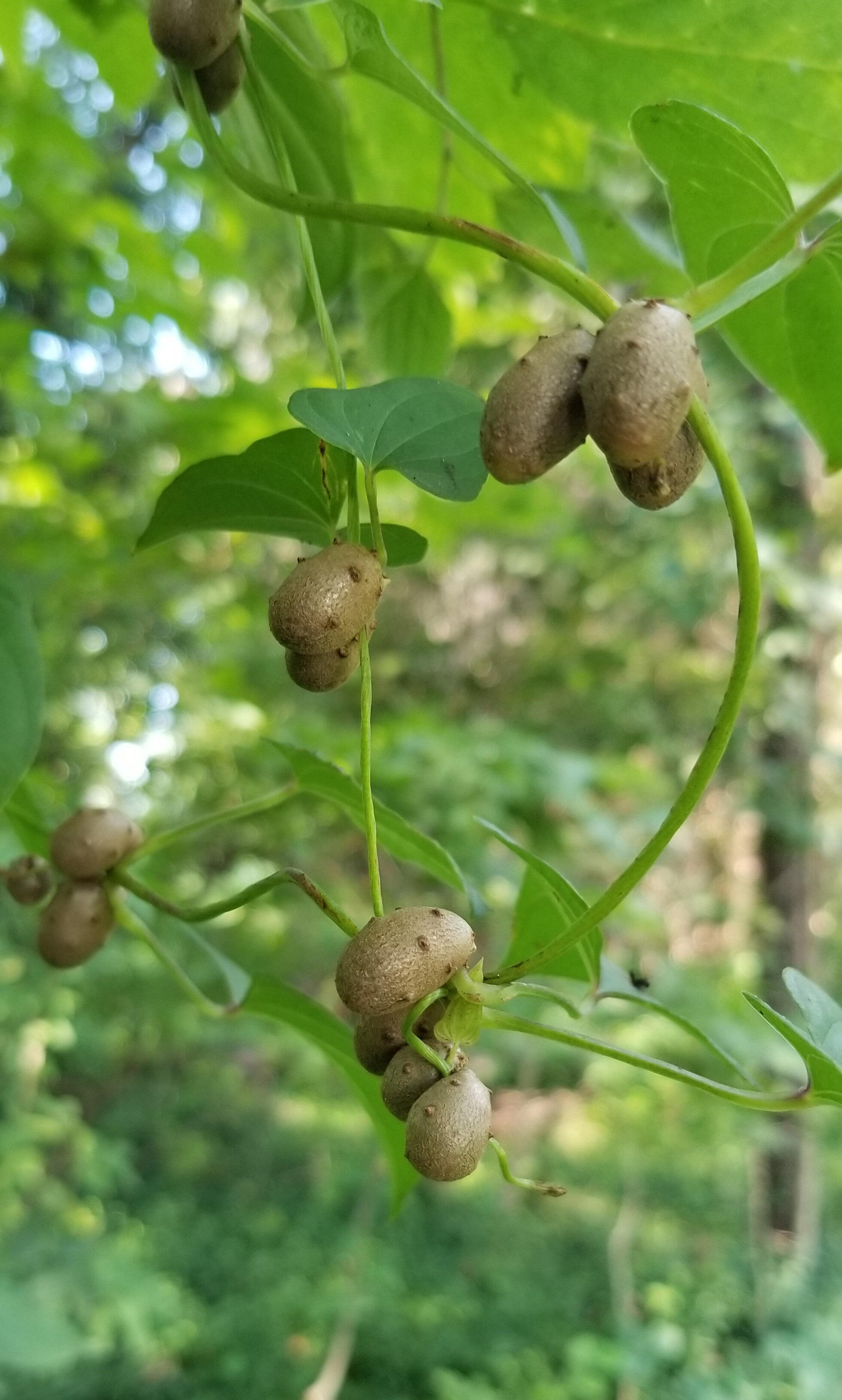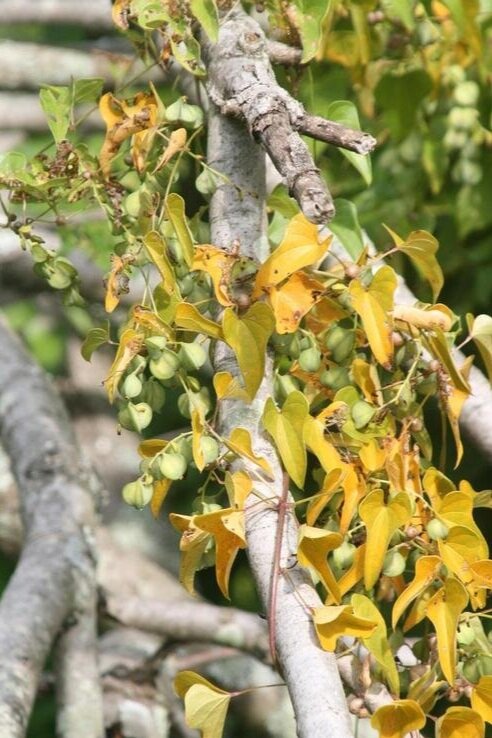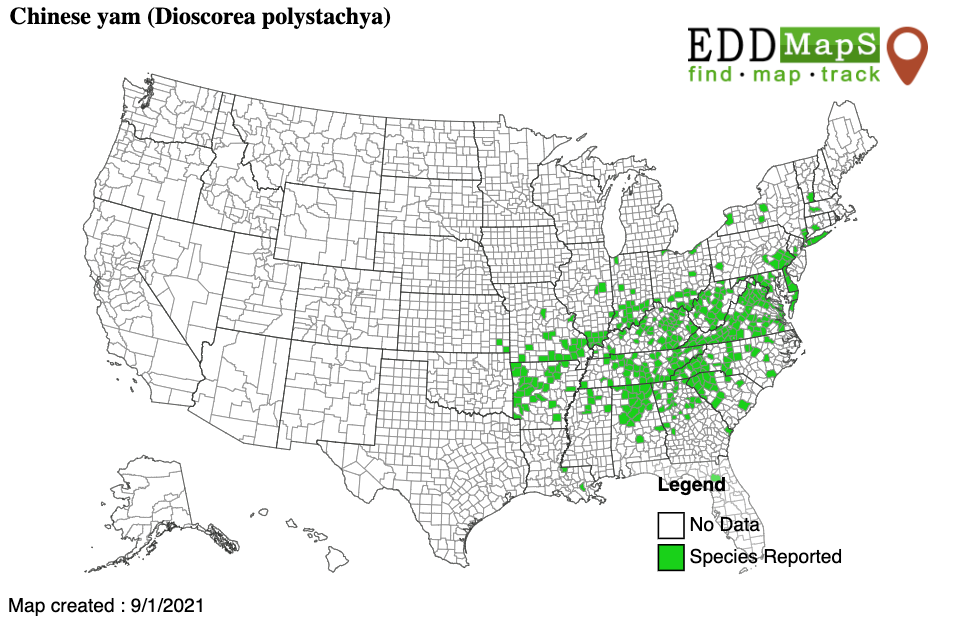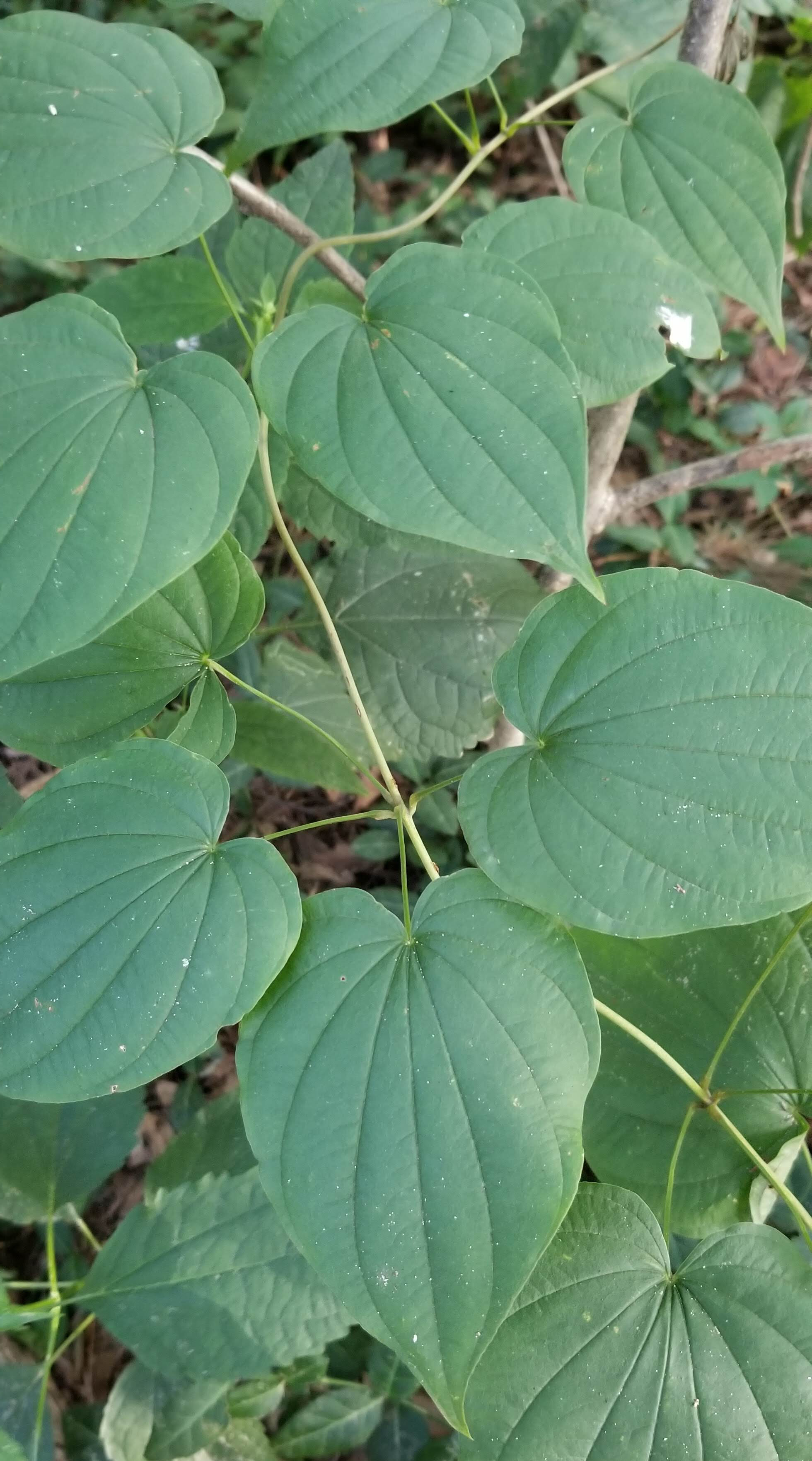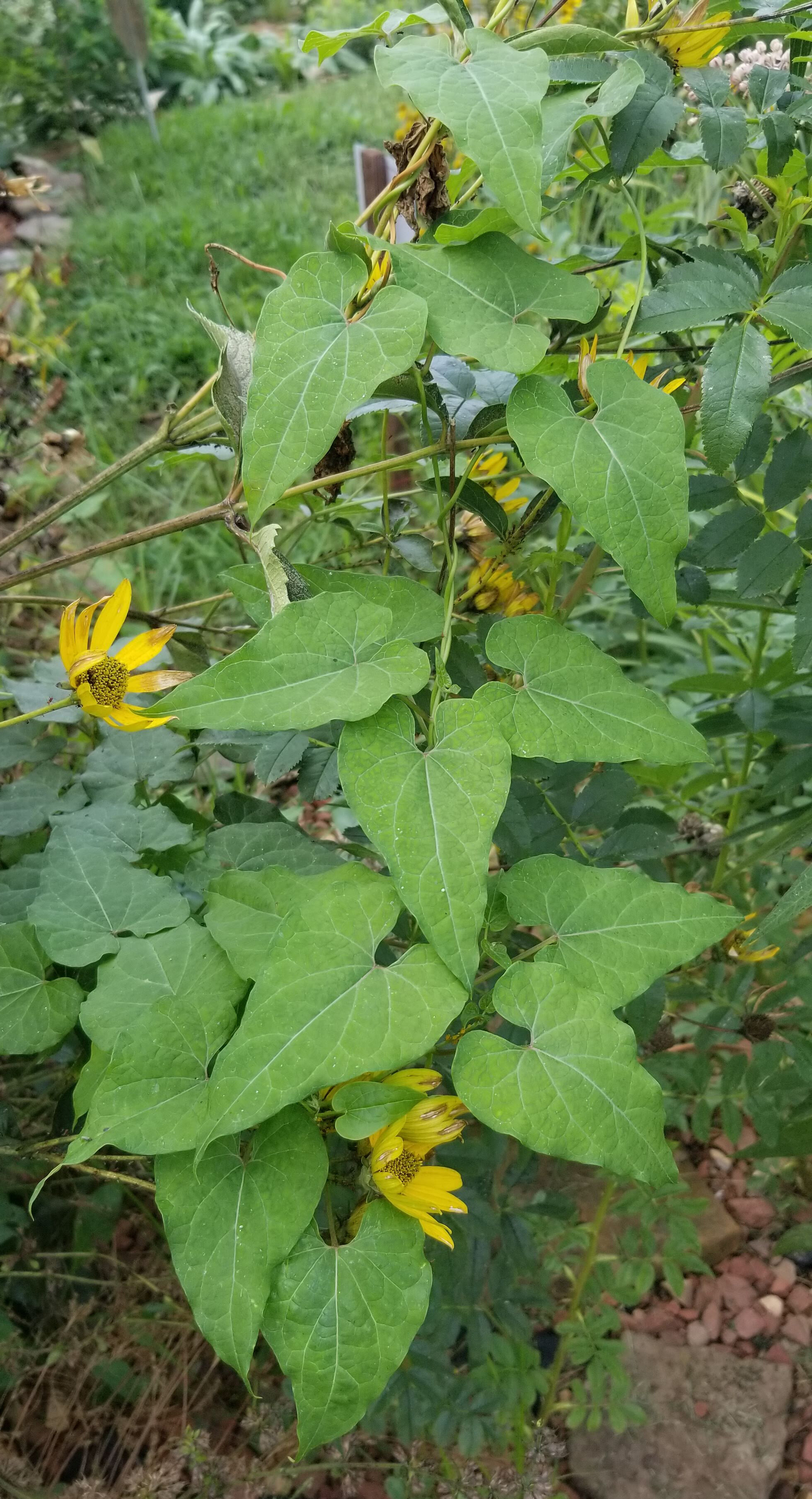September 2021 Invasive Plant of the Month
SICIM Email
Chinese Yam (Dioscorea polystachya Turcz.)
Also known as cinnamon vine, Chinese yam (Dioscorea polystachya Turcz.) is an herbaceous, perennial vining plant that invades floodplain forests, forest edges, ditches, riparian areas, fencerows, roadsides, and other disturbed areas. This plant can be spotted in summer and grows quickly when conditions are favorable. A native of China and India, this species was introduced to North America as a culinary and ornamental plant in the 1800s and has now been reported in 18 Indiana counties (mostly in the southern part of the state). However, it is likely to be underreported and more widespread. Chinese yam is among the 44 species regulated under the Indiana Terrestrial Plant Rule.
IDENTIFICATION & BIOLOGY: Chinese yam is in the Dioscoreaceae family (aka yam family) that reproduces mostly via aerial bulbils (above ground, tuber-like structures). It usually has opposite, entire leaves with a cordate base. These leaves can range from looking mostly heart-shaped to fiddle-shaped, and have a narrow middle that tapers to a point. The leaves have 7-9 prominent veins that run from the leaf base out to the edges. It can produce inconspicuous white flowers arranged in a panicle that have a cinnamon smell (hence the common name called cinnamon vine). If fruit is produced (which is seldom), they are capsules with prominent wings. The most distinguishing feature about Chinese yam is the aerial bulbils that develop in late summer in the leaf axils, which can be numerous along a single vine. These bulbils are the primary vector of Chinese yam and can be easily spread by rodents and water. Chinese yam overwinters as a tuber, and the tubers can grow to be 3 ft. in length.
LOOK-A-LIKES: There are two native species in the Dioscorea genus that could be mistaken for Chinese yam. The first is wild yam (Dioscorea villosa), which can be found occasionally throughout the state. Wild yam can be distinguished from Chinese yam by its opposite or whorled leaves, which have more of a classic heart-shaped appearance. The other is fourleaf yam (Dioscorea quaternata), which can be found mainly in southern Indiana. Fourleaf yam always has whorls of four leaves, which is its best distinguishing feature from Chinese yam. Both of these native species also lack the aerial tubers present on Chinese yam.
The native honeyvine milkweed (Cynanchum laeve) can also be mistaken for Chinese yam at a glance. Honeyvine has opposite, cordate leaves but lack the “fiddle-shape” of Chinese yam. It also lacks the prominent venation found in Chinese yam leaves.
Native greenbriar species (Smilax species) can also sometimes be mistaken for Chinese yam due to the similar color leaves and prominent venation. To distinguish greenbriars from Chinese yam, the leaf arrangement is alternate and the leaves are not “fiddle-shaped”, though greenbriar vines may or may not have cordate bases. Also, some, but not all, species of greenbriar have thorns along their stems.
HABITAT & DISTRIBUTION: Chinese yam prefers fertile soils along riparian areas and floodplain forests. It can grow in full sun to full shade and moist to fairly dry soil conditions. Besides riparian areas and floodplain forests, Chinese yam is found along forest edges, ditches, fencerows, roadsides and other disturbed areas. It has been reported in 18 counties of Indiana and throughout the Mid-Atlantic and Southern US states.
ECOLOGICAL THREAT: Chinese yam can quickly overgrow small trees and shrubs, reducing their ability to photosynthesize and shading out understory species. The added weight of dense Chinese yam vines can cause tree and shrub branches to break. Bulbils are spread by rodents and water, which can lead to a wide range of dispersal.
CONTROL: The most effective control will likely involve an herbicide application as outlined in the “Chemical” section below.
Prevention: As Chinese yam was introduced intentionally as a culinary/medicinal plant, the best way to prevent an invasion is to not plant the tubers or bulbils, which is now prohibited in Indiana under the Terrestrial Plant Rule.
Manual: Can be effective for early detection sites. Pull or dig up the plants, place in trash bag and dispose of with regular trash. Also, after bulbils have developed on mature vines, they should be handpicked and bagged for disposal to prevent further spread.
Mechanical: Mowing or cutting back may reduce tuber size and eventually exhaust a population, but this would require regular and repeated cutting over the course of several growing seasons.
Chemical: Effective for large infestations and for spot spray applications to individuals and clumps of plants. Herbicide application should be performed while the plant is actively growing until fall. Spraying later in the season can result in better control; however, spraying before bulbil formation may be advantageous to prevent further spread. The following herbicide active ingredients are recommended:
Glyphosate: Use herbicides containing at least a 41% concentration of glyphosate and follow label directions to mix a 2% spray solution. Thoroughly wet all surfaces of the plant, but not to the point of runoff. Use caution as glyphosate is non-selective and will damage or kill any plant it contacts.
Triclopyr: Use herbicides containing 60% active ingredient and follow label directions to mix a 2% spray solution. This spray will not harm grasses, only other broadleaf plants.
Adjuvants: The addition of 0.5% nonionic surfactant to either chemical is recommended to increase efficacy.
IMPORTANT: The pesticide label is the law! When using any chemical control, always read and the entire pesticide label carefully, follow all mixing and application instructions, and use all personal protective gear and clothing specified. Contact the Office of Indiana State Chemist (OISC) for additional pesticide use requirements, restrictions, or recommendations.
Maintenance: Follow-up treatments will likely be required.
REFERENCES & OTHER RESOURCES:
https://books.google.com/books/about/Invasive_Plants.html?id=FjESf1w8_uwC
https://www2.illinois.gov/dnr/grants/Documents/WPFGrantReports/2001021W.pdf
LOOK-A-LIKE REFERENCES:
#ChineseYam #Dioscoreapolystachya #IndianaInvasivePlants #IndianaInvasivesInitiative

